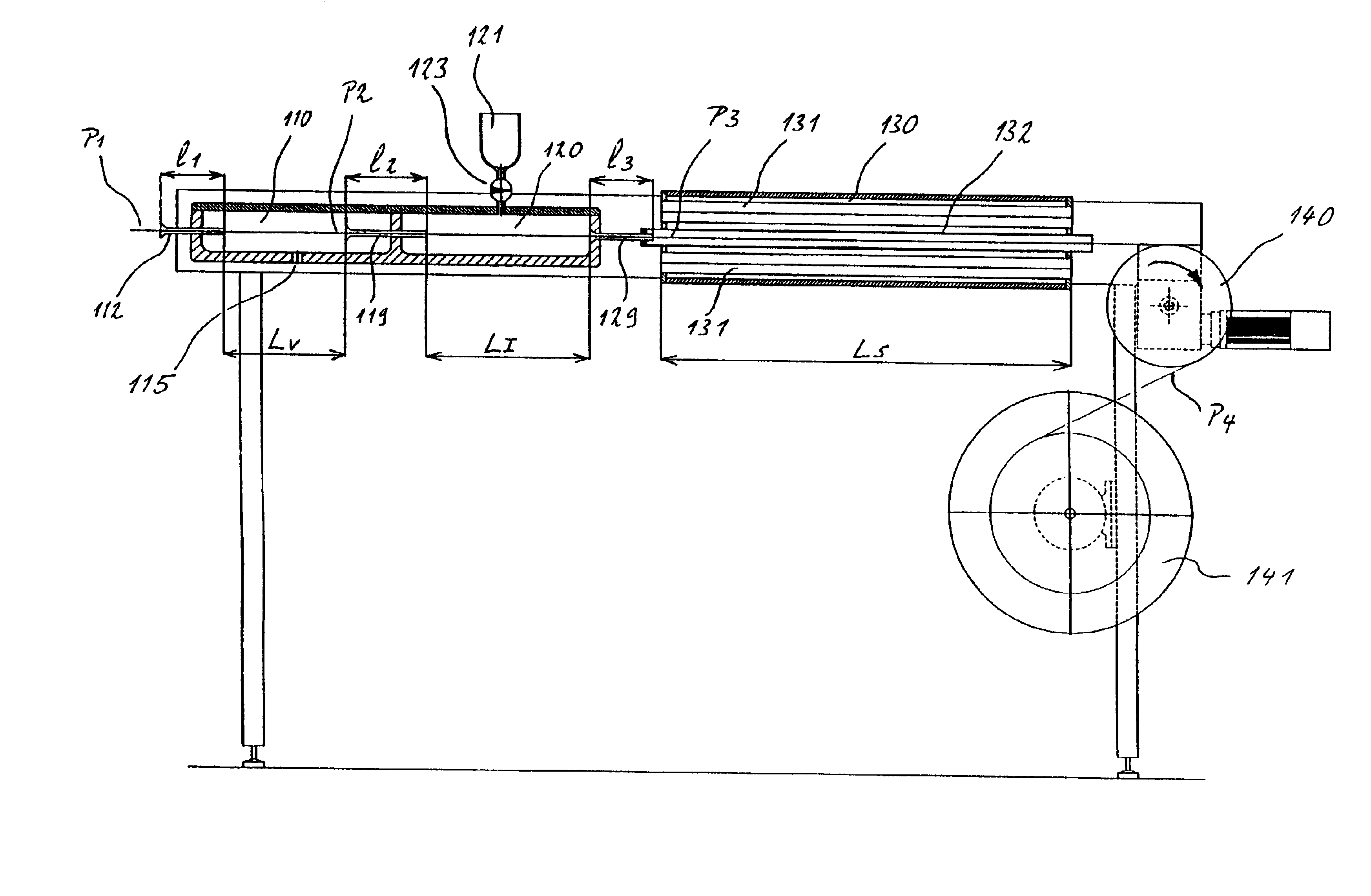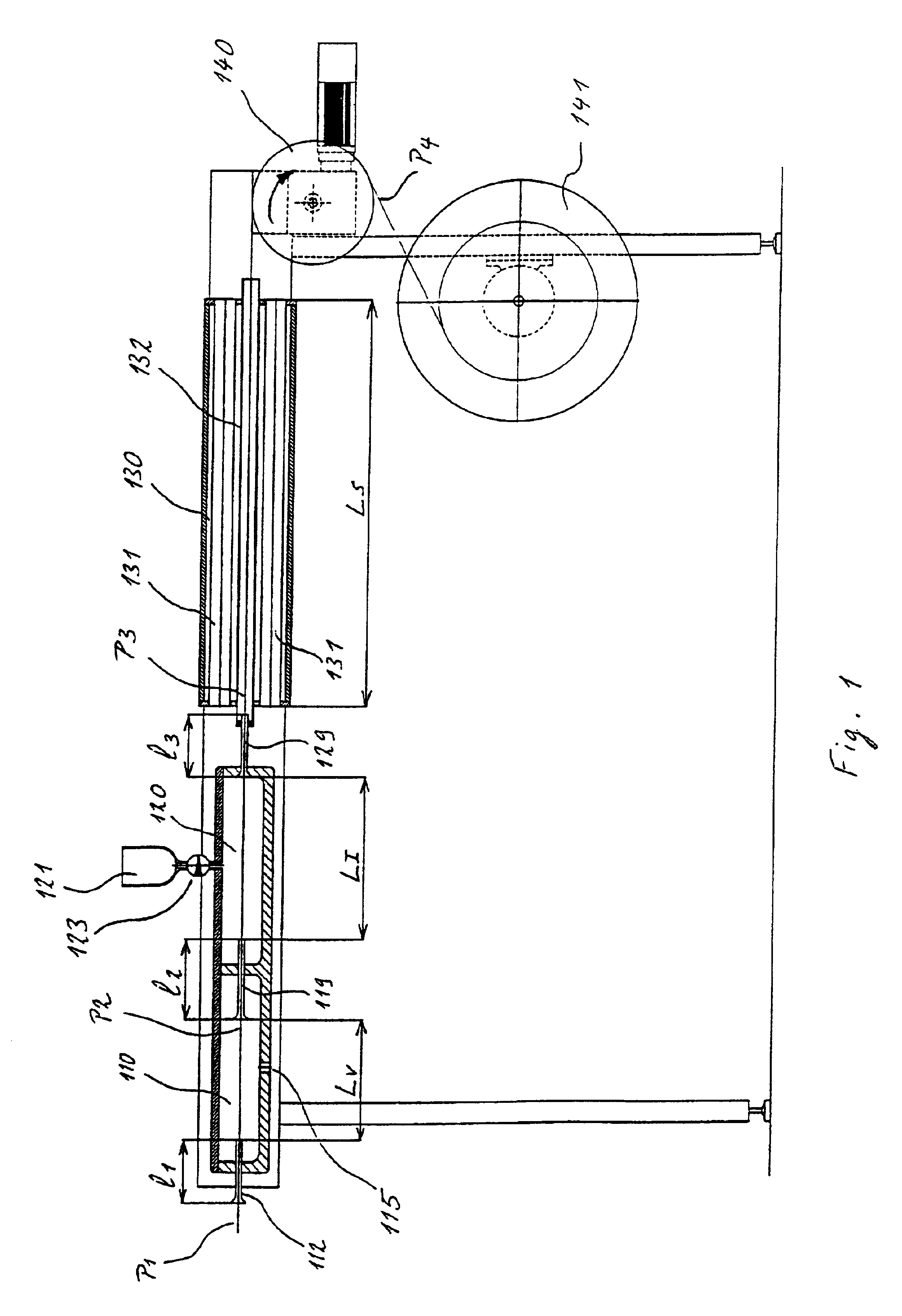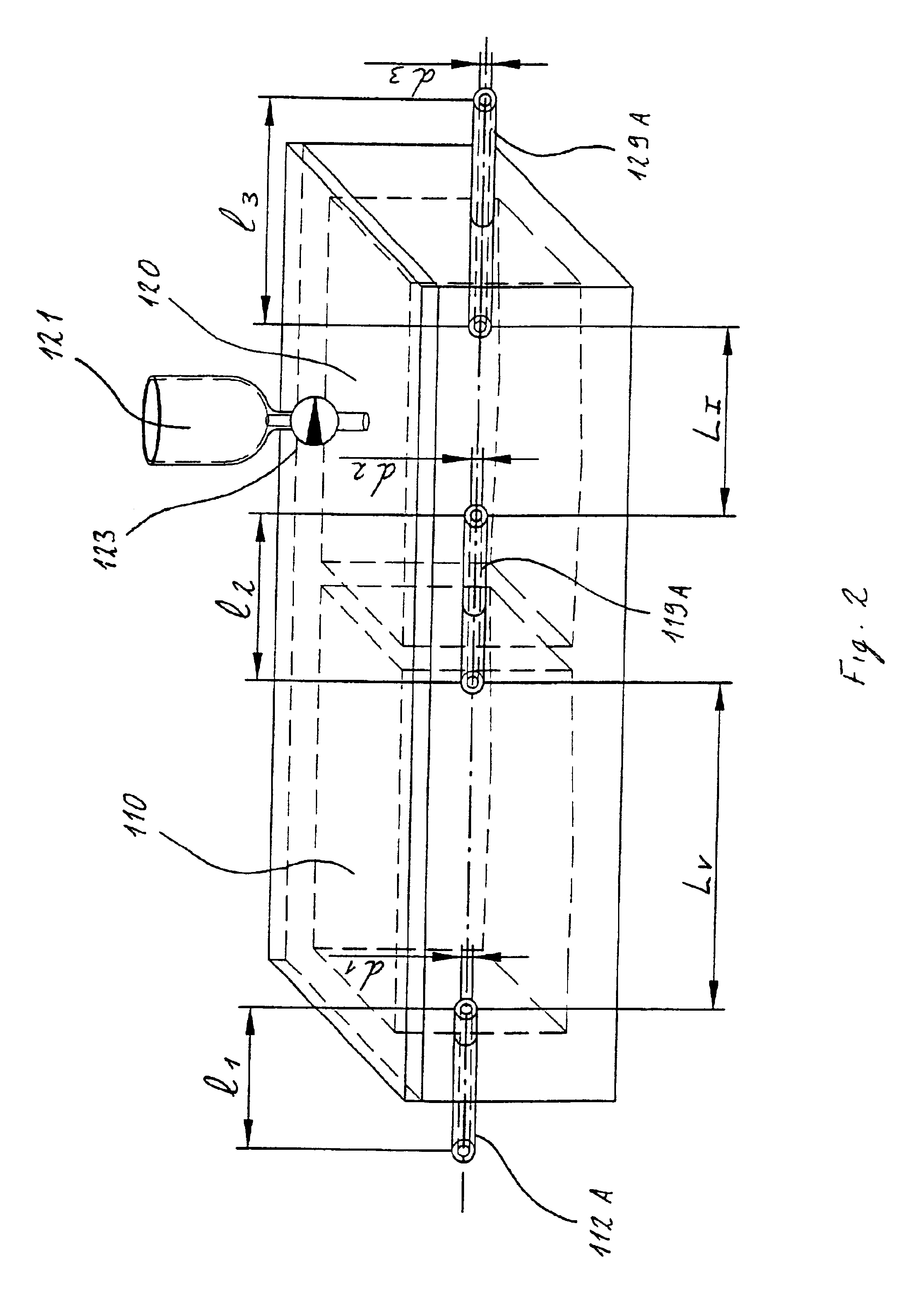Continuous impregnation of long fibers with resin for manufacturing elongate composite elements
- Summary
- Abstract
- Description
- Claims
- Application Information
AI Technical Summary
Benefits of technology
Problems solved by technology
Method used
Image
Examples
Embodiment Construction
[0047]The invention lends itself to a wide range of shapes for the cross section of the composite material produced, comprising suitable fibers embedded in the selected resin. FIGS. 1 to 3 illustrate an installation which is more particularly suited to manufacture of an elongate composite element of round cross section. FIG. 1 shows the fibers P1 being continuously unwound from a reel. In general, the reinforcement fibers are supplied in rovings, that is to say in groups of fibers wound in parallel on a reel (for example, fibers, also known as filaments, are used which are sold under the name PPG 2001-300 TEX).
[0048]For example, the composite material exits in the form of a filament P4 of round cross section of any size, drawn by a winding device comprising a roller 140 and a receiving reel 141. The traction exerted by the roller 140 is what allows feed of the fibers in parallel along the installation.
[0049]FIG. 1 reveals in succession a vacuum chamber 110, an impregnation chamber 1...
PUM
| Property | Measurement | Unit |
|---|---|---|
| Temperature | aaaaa | aaaaa |
| Temperature | aaaaa | aaaaa |
| Temperature | aaaaa | aaaaa |
Abstract
Description
Claims
Application Information
 Login to View More
Login to View More - R&D
- Intellectual Property
- Life Sciences
- Materials
- Tech Scout
- Unparalleled Data Quality
- Higher Quality Content
- 60% Fewer Hallucinations
Browse by: Latest US Patents, China's latest patents, Technical Efficacy Thesaurus, Application Domain, Technology Topic, Popular Technical Reports.
© 2025 PatSnap. All rights reserved.Legal|Privacy policy|Modern Slavery Act Transparency Statement|Sitemap|About US| Contact US: help@patsnap.com



